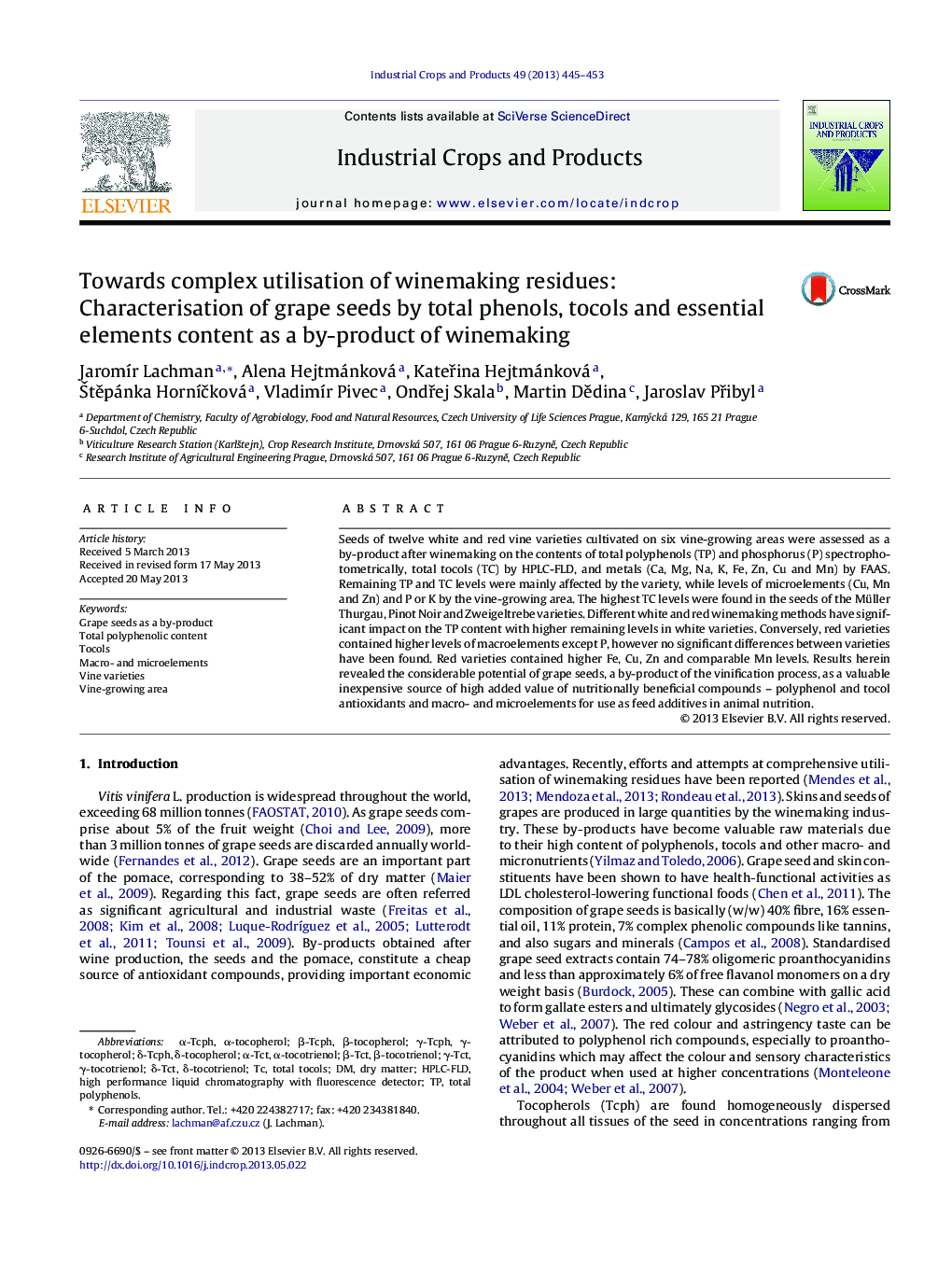| Article ID | Journal | Published Year | Pages | File Type |
|---|---|---|---|---|
| 6377362 | Industrial Crops and Products | 2013 | 9 Pages |
Abstract
Seeds of twelve white and red vine varieties cultivated on six vine-growing areas were assessed as a by-product after winemaking on the contents of total polyphenols (TP) and phosphorus (P) spectrophotometrically, total tocols (TC) by HPLC-FLD, and metals (Ca, Mg, Na, K, Fe, Zn, Cu and Mn) by FAAS. Remaining TP and TC levels were mainly affected by the variety, while levels of microelements (Cu, Mn and Zn) and P or K by the vine-growing area. The highest TC levels were found in the seeds of the Müller Thurgau, Pinot Noir and Zweigeltrebe varieties. Different white and red winemaking methods have significant impact on the TP content with higher remaining levels in white varieties. Conversely, red varieties contained higher levels of macroelements except P, however no significant differences between varieties have been found. Red varieties contained higher Fe, Cu, Zn and comparable Mn levels. Results herein revealed the considerable potential of grape seeds, a by-product of the vinification process, as a valuable inexpensive source of high added value of nutritionally beneficial compounds - polyphenol and tocol antioxidants and macro- and microelements for use as feed additives in animal nutrition.
Keywords
Related Topics
Life Sciences
Agricultural and Biological Sciences
Agronomy and Crop Science
Authors
JaromÃr Lachman, Alena Hejtmánková, KateÅina Hejtmánková, Å tÄpánka HornÃÄková, VladimÃr Pivec, OndÅej Skala, Martin DÄdina, Jaroslav PÅibyl,
